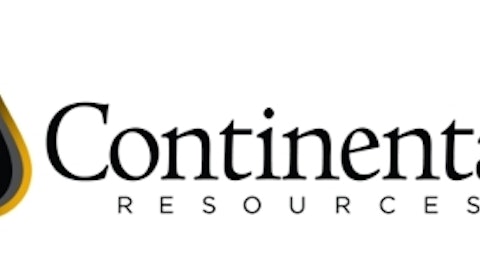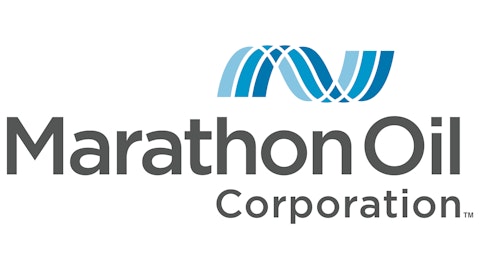
Alaska
Even with spending $2.5 billion in its five-year plan, ConocoPhillips (NYSE:COP) can only mitigate its base decline by 3% per year. That’s actually not a bad decline rate, but it is something that the company will need to make up elsewhere if it plans on growing. Overall, the capital invested will offset about 35,000 barrels of oil equivalent per day of production by 2017. The good news is that the rest of its U.S. development capital is being invested to grow production above its decline rates.
Permian Basin
Over the five-year development plan, ConocoPhillips (NYSE:COP) will spend about $3 billion on its million net acres in the Permian. By adding 40,000 barrels of oil equivalent per day of production, ConocoPhillips (NYSE:COP) will not only mitigate its base decline, but will see 7% compound annual production growth through 2017. Not only is production growing here, but its oil production will go from about 30% last year, to over 75% of production over the five-year plan. That’s a great showing, with the improvement in oil production the big key here.
The Bakken
With a five-year plan to spend about $4 billion, ConocoPhillips (NYSE:COP) has big plans for the Bakken. This capital will drive tremendous production growth of 45,000 barrels of oil equivalent per day, and will result in a compound annual production growth rate of 18% through 2017. Again, like the Permian, the production mix will increasingly be oil, with the production mix jumping from 20% oil last year, to a five-year average of more than 80%.
The Bakken is one of the premier oil-levered plays in the U.S. With 2012 production of less than 30,000 barrels of oil equivalent per day, Conoco is a smaller player. For perspective, its production in the play is a bit more than Kodiak Oil & Gas Corp (USA) (NYSE:KOG) , which should end this year at that rate. Even with all the growth, ConocoPhillips (NYSE:COP)’ projected 2017 production of more than 50,000 barrels of oil equivalent per day will be well short of current top dog Continental Resources, Inc. (NYSE:CLR) , which already sees production topping that mark. Still, the Bakken is a key resource to develop for the company, and this is money well spent.
Eagle Ford
The biggest capital spend will be on developing its position in the Eagle Ford Shale. Conoco’s plan calls for $8 billion to be spent over the course of its five-year development. That will add more than 130,000 barrels of production per day by 2017, which is a compound annual growth rate of 16%. Again, like the Bakken and Permian, this production will be increasingly oil rich, as the mix shifts from around 20% last year, to an average of more than 60%.
The Eagle Ford is one of the best liquids growth pays in the U.S., and Conoco isn’t the only company investing heavily to develop this play. Chesapeake Energy Corporation (NYSE:CHK) is devoting the largest portion of its capital on the play, with 35% of its drilling and completion capital earmarked to develop the Eagle Ford this year. As one of the best liquids growth plays, its no wonder why these two are investing so heavily in its development.
My Foolish take
When you add up these four key areas with the company’s other legacy development opportunities, ConocoPhillips (NYSE:COP) plans to grow its production in the U.S. by 5% annually through 2017. In total, the company will be spending $25 billion through 2017 to add 365,000 barrels of oil equivalent per day here at home. That’s just enough to offset the declines in its international development programs to keep production steady throughout its current portfolio In order to grow production, Conoco will need to deliver on its major international projects so that it can meet its ambitious goal of growing production by 3% to 5% on an annual basis.
The article How ConocoPhillips Is Stopping its Decline in the U.S. originally appeared on Fool.com and is written by Matt DiLallo.
Fool contributor Matt DiLallo owns shares of ConocoPhillips. The Motley Fool has the following options: Long Jan 2014 $20 Calls on Chesapeake Energy, Long Jan 2014 $30 Calls on Chesapeake Energy, and Short Jan 2014 $15 Puts on Chesapeake Energy.
Copyright © 1995 – 2013 The Motley Fool, LLC. All rights reserved. The Motley Fool has a disclosure policy.




